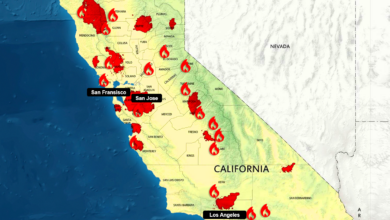Another major hurdle in the fight against COVID-19 was cleared on Wednesday when the US Centers for Disease Control and Prevention (CDC) officially recommended the Pfizer vaccine for use in the 12-15 age group.
Understanding the Study Results: Dr. Sara Oliver with the CDC’s National Center for Immunization and Respiratory Diseases told the ACIP that the vaccine demonstrated the efficacy of 100% against symptomatic and confirmed cases of COVID-19 in this age group. In addition, serious side effects were extremely rare with no adverse events linked to the vaccine. There were no reports of a severe allergic reaction in the 2,200 trial participants.
White House Reaction: The White House welcomed the news of the approval with great optimism. According to a statement by President Joe Biden, this approval means that the vaccine is now open to 17 million more Americans. Biden went on to encourage parents to take their children to get vaccinated right away.
The American Academy of Pediatrics (AAP) also jumped on board to endorse the use of the vaccine in this age group.
Why is This Recommendation Significant? So why is this official recommendation so important? While it has been well documented that children in this age group are not as seriously affected by the virus as older adults, they are still at risk of serious complications and deaths. Early in the pandemic, it was mostly older adults who were coming down with the virus. However, as this population began to receive its vaccinations, children and teenagers began to see a greater proportion of infections.
For example, 9% of the total confirmed cases in April 2021 were children between the ages of 12 and 17. This number was larger than the number of cases in adults 65 and over. The CDC also cautions that these numbers are severely underestimated because so many cases go unreported.
What About the Younger Kids? So what is next for those kids under the age of 12? Last week, Pfizer said that it was planning to submit the request for emergency use authorization (EUA) for its vaccine for children ages 2 to 11 in September. It is still studying the safety and efficacy of the vaccine for kids in the 6 months to 11 years age bracket. In addition, the FDA has already scheduled a meeting on June 10 for its Vaccines and Related Biological Products Advisory Committee to discuss the possibility of extending the EUA to kids under the age of 12.
Administering Vaccines Together? Up until recently, healthcare providers had been advising patients to not receive the COVID-19 vaccine within two weeks of the administration of any other vaccine. However, the CDC has now changed its guidance on this issue.
The CDC is now recommending that Americans seek out the COVID-19 vaccine as soon as possible, regardless of whether they have received another type of immunization within the last few weeks. The latest research shows no adverse effects when the COVID-19 vaccine is administered within a close time interval of another immunization.
The AAP also endorsed the practice of the coadministration of multiple vaccines. This is particularly important because it has been observed that many children are falling behind on their regular vaccination schedule due to the pandemic. Adding another delay in routine immunizations in order to receive the COVID-19 vaccine could put more children at risk of developing other diseases.
Easy and Fast Access to Vaccines: The good news is that it should not be too challenging for most kids in this newly expanded eligibility group to receive the vaccine. A new study out of VaccineFinder finds that almost 80% of all Americans live within five miles of all three approved COVID-19 vaccines. This includes Americans in some of the nation’s smallest towns.
In addition, it has become easier and easier in recent weeks to find a vaccine. While these coveted shots were hard to come by during the initial rollout, accessibility and availability are no longer the issues that they once were. With a great majority of the country’s most vulnerable populations already vaccinated, it should be easier for most parents to locate a vaccine for their newly eligible child.
Where Vaccinations Stand Now: As of Wednesday, approximately 45% of all American adults were fully vaccinated. There are 15 states with over half of the adult population fully vaccinated, according to the latest data from the CDC. These states are Connecticut, Maine, Massachusetts, Vermont, New Mexico, New Jersey, Rhode Island, South Dakota, Hawaii, Maryland, New York, Minnesota, Wisconsin, Nebraska, and Iowa.
California to End Mask Mandate: In a somewhat surprising move, California Gov. Gavin Newsom hinted on Wednesday that his state will end the mask mandate on June 15. When asked by a reporter about the mandates, Newsom said that after this date, masks will only be required in indoor settings or where large amounts of people are gathering. June 15 is also the date that Newsom has targeted to fully reopen the state






